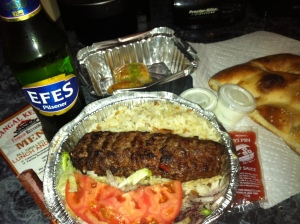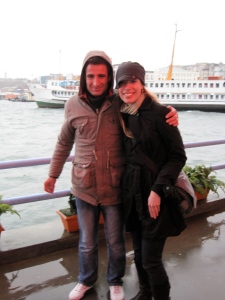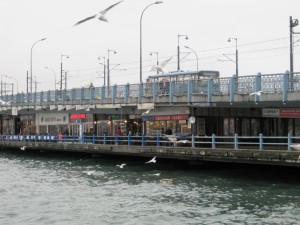I took a cooking class in Bali when I was there in September. I love to cook, I love food, and I loved Bali. It like seemed a good way to spend three hours.
As it turns out, I also really love Balinese food. The prominent use of lime and ginger—coupled with the sweetness of palm sugar, the subtle tanginess of tamarind, and just enough heat to make you sweat—hit all my foodie sweet spots. The cooking class was one of the highlights of my trip.
However, I have yet to cook a single Balinese dish at home. Why haven’t I put my fancy culinary skills into practice?
I met a young Belgian bride at my cooking class who told me she and her husband learn to cook the cuisine wherever they travel. They then plan monthly date nights to make the food from their holiday destinations. “It’s little taste of holiday was once you go home,” she said. What a great concept.
I thought of her the other night as I ate Turkish takeout out of an aluminum bowl. It turns out that New York, in all its international culinary glory, has spoiled me from ever bothering to create international culinary brilliance on my own.
The best Turkish food I’ve ever had? Not in Istanbul. In Queens. Mangal Kebab in Sunnyside got me through grad school. I can also score a bottle or two of Efes, a Turkish pilsner, at the deli two blocks from my apartment.

Istanbul via Queens: lamb adana, home bread, some of the best baklava I've ever had. Washed down with the beer I was too ladylike and respectful to drink in Muslim Turkey.
I became obsessed with palak paneer in India. Minar, directly across the street from my office, does some of the best—complete with Bollywood music and Hindi newspapers. Check.
I’ve even found a pretty close match to the elusive Singaporean/Malay laksa. FoodParc’s new Mr. Wong’s Noodles does a red coconut curry broth that, with some pho, fried tofu, and add-on bamboo shoots transported me back to that first happy meal in Asia.

Fresh lime juice and curry laksa, my first (heavenly) meal in Singapore. Well, if you don't count the quiche at the Changi Starbucks. And I don't.

And at home in New York: Mr. Wong's red curry coconut broth. Not exactly laksa. But pretty darn close. And deliciously indulgent in its own soupy rite.
I will cook Balinese food. I will. I’ve even going to try to beat Mr. Wong at his laksa. I gloated to my cooking class compatriots that I didn’t need to smuggle back exotic spices because, in New York, we can get everything—even galangal root and kaffir lime leaves (Asia Market on Mulberry and Bangkok Center Grocery in Chinatown, if you’re wondering).
But, as any New Yorker will tell you, there’s a big difference between having it all and having time for it all. Even in the hustle of the holidays, I hope to set aside some time to sink my teeth—and my Santoku knife—into some sayur urab and a big steaming pot of opor ayam.
If I can’t find time to cook it all in New York, I have a plan. I will trudge around town, procure the ingredients, wrap them ever so carefully, and smuggle them in my luggage to a faraway land where they can’t be found. Iowa, where I will spend nine relaxing days at Christmas, is exotic in its inactivity, and I’m looking forward to sharing the taste of my holidays with the family I love.







